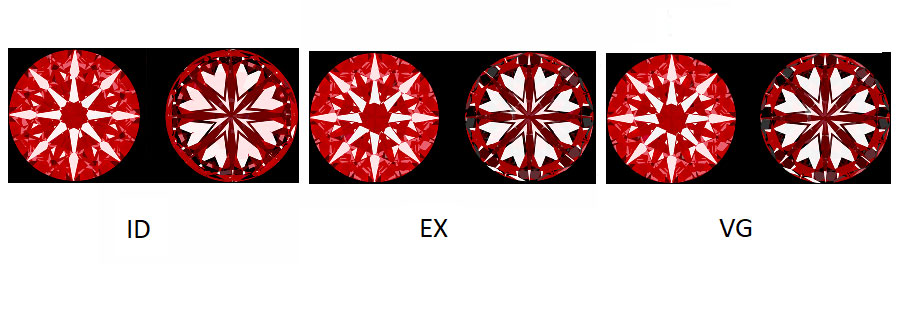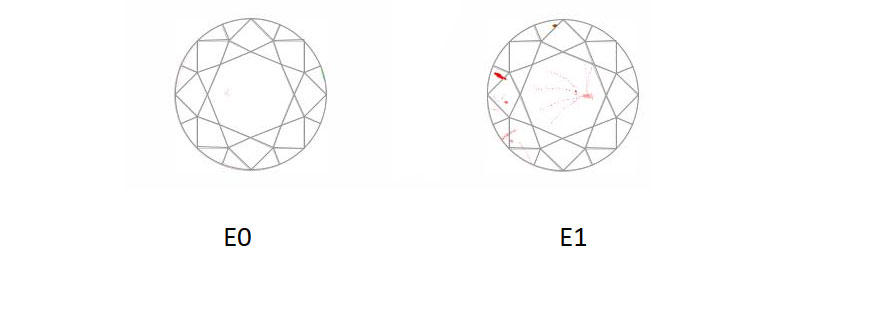
Carats
The Carat is the measure of the actual weight of the diamond. A carat is divided into 100 points. A 0.50 carat diamond may also be referred to as 50 points.
Stones that have too high a depth percentage carry more weight in the height of the diamond where it does not add to the visual size appearance.
Color
Diamond color is all about what you cant see.Lesser the color , the higher their value. On the basis of color, diamonds are allocated a grade, starting with D, representing colorless, and continues with increasing presence of the color to the letter Z.


Clarity
Diamonds are formed under extreme heat & pressure, deep within the earth, thus they often contain birthmarks, either internal or external. Diamonds with less birthmarks are rare, and rarity affects its value. Diamonds are allocated a grade, which ranges from FL (no inclusions) to I3 (obvious inclusions).
Cut
The cut is the most important element which reflects its brilliance, sparkle, fire and scintillation, which is mostly determined by 3 factors, proportion, polish & symmetry. Each diamond is assigned an overall cut grade from Excellent to Poor.
- ID - IDEAL
- EX - Excellent
- VG - Very Good
- GD - Good
- FR - Fair
- PR - Poor

Polish
All facets of a diamond are carefully polished to eliminate all imperfections, characteristics such as abrasions, scratches, nicks and polishing marks on the surface of the diamond to give the mirror shine and the final beauty touch.
- EX - Excellent
- VG - Very Good
- GD - Good
Symmetry
Symmetry is the balance and regularity / evenness of facets.
Facets are compared in opposing pairs, defined as following:
- EX - Excellent
- VG - Very Good
- GD - Good

Table Inclusion
- T0 - Table Clean
- T1 - Minor Inclusion In Table
- T2 - Medium Inclusion In Table
- T3 - Major Inclusion In Table
- T4 - Most Inclusion In Table
Black Inclusion
- B0 - No Black
- B1 - Minor Black Inclusion
- B2 - Medium Black Inclusion
- B3 - Major Black Inclusion
- B4 - Most Black Inclusion


Inclusion Pattern
- S1 - Scattered Inclusion
- S2 - Semi Scattered Inclusion
- C1 - Light Concentrated Inclusion
- C2 - Semi Concentrated Inclusion
- C3 - Concentrated Inclusion
Type Of Fluorescence
Fluorescence, the effect ultraviolet (UV) light has on a diamond, is an important consideration when selecting a diamond. When UV light strikes a diamond with fluorescent properties, the stone emits a glow that is usually blue, but can also reflect shades of green, yellow, white, pink, orange, and red. The sources of fluorescence, boron and nitrogen, are the same mineral properties that lend color to a diamond. Fluorescence can occur in different intensities. Gemological laboratories rate the fluorescence of each diamond on a scale from "None" to "Very Strong"

Heart & Arrow
- ID - 90%-100%
- EX - 80%-89%
- VG - 80% BELOW

Eye Clean
- E0 - Eye Clean
- E1 - Eye Visible

